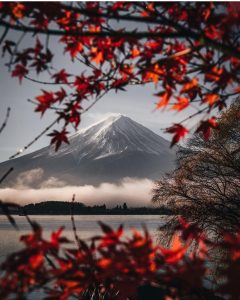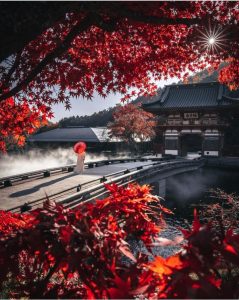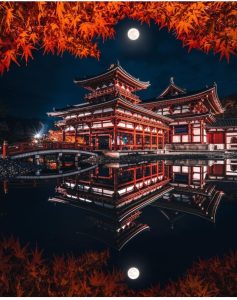Last Updated on December 8, 2023 by Sharon Advik
Nikon D750 Review:
Overview:
The studio is an empty room in which I selected many concepts to generate a fabulous shoot as the thinking aspect for my clients.
I used the superior capabilities of the Nikon D750 to take pictures of the adorable model while she was advertising the choker jewelry.
I was assigned to locate the most suitable shoots for the particular brand’s adorned and pricey jewelry, and I succeeded.
I focused much of my attention on utilizing the many colors of the background for the primary object.
I was very impressed with how well this camera performed in studio photos.
| Key Specifications |
|---|
| 3MP FX-Format CMOS Sensor |
| EXPEED 4 Image Processor |
| 2" 1,229k-Dot RGBW Tilting LCD Monitor |
| 60 frames per second 1080p Full HD video recording |
| Multi-CAM 3500FX II 51-Point AF Sensor |
| ISO 12800 native, ISO 51200 Extended |
| Continuous shooting with a maximum frame rate of 6.5 |
| RGB Sensor with 91k pixels and Group Area AF. |
| Built-In Wi-Fi Connectivity |
| Time Lapse Shooting & Exposure Smoothing |
EXPEED 4 Image Processor with 24.3MP FX-Format CMOS Sensor:
Rich image quality is produced by the 24.3-megapixel FX-format CMOS sensor, which works closely with the EXPEED 4 image processor to achieve this goal.
This rich image quality is highlighted by low noise and significant sensitivity to a base ISO of 12800, which can be expanded to ISO 51200.
The combination of the sensor and the CPU also works together to realize a richness of speed across the camera system.
This includes a full-resolution continuous shooting rate of 6.5 frames per second and full HD 1080p/60 video recording capabilities.
When a DX lens is mounted, the sensor will immediately transition to the DX mode and allow for the use of DX lenses.
Additionally, the sensor may record imagery in the DX format.





Full HD Video Recording:
The processing power of the EXPEED 4 extends beyond the performance of still imaging.
Also, it benefits video recording in Full HD 1080p at multiple frame rates of up to 60 frames per second.
During the recording process, you can exercise complete manual control over the shutter speed, aperture, and ISO settings and the option to use the Auto ISO adjustment while in manual mode.
In addition, in-camera picture control profiles, custom tone curves, and flat profiles, all beneficial to color grading applications, can be implemented to help control overexposure during recording. Zebra stripe highlighting can also be utilized for this purpose.
In addition, the multi-area mode reduces your effective field of view when recording in both the FX and DX settings.
This provides you with a wider variety of shooting perspectives during the shooting process.
It is also possible to acquire an uncompressed 4:2:2 8-bit output through the HDMI connection by recording to an optional external recorder, which is also feasible.
When recording externally, it is also possible to use the camera’s LCD panel for live-view video monitoring.
Control of the power aperture is supported not only when recording to internal memory cards but also when recording to external memory cards.
It is possible to record concurrently to both memory cards and an external recording device for quick backup and duplication of files.
Additionally, photographs with a resolution of 2 megapixels (16:9) can be shot simultaneously while the video is recorded.
In-camera video editing is also an option; users may choose where their movies are saved when they record them.
When it comes to recording sound, the stereo microphone built into the camera itself or the interface provided for using an external stereo microphone can be utilized.
In addition to having the opportunity to hear audio through the headphone output, the sound levels can be modified within a range of 20 stations before and during the recording.




51-Point Advanced Multi-CAM 3500FX II AF Sensor:
The remarkable photography capabilities of the D750 are supported by an accurate autofocus system that utilizes up to 51 different points.
Depending on the circumstances, users can choose to use 9, 21, or all 51 points, and the AF detection sensitivity can go as low as -3 EV.
In addition, 15 cross-type points have been incorporated into this array to give centrally positioned subjects an even higher level of precision.
Eleven focus points are sensitive to an aperture setting of f/8, making telephoto lenses and teleconverters more effective.
When shooting at high continuous shooting speeds, the use of 3D Tracking, which is a component of the intelligent Scene Recognition System, helps to ensure that the subject is focused on is maintained, resulting in improved accuracy.
With the Group Area AF setting, it is possible to employ all five of the camera’s autofocus sensors as a single focus point, which makes initial focusing and subject recognition even quicker.
In addition, options such as Single-point AF, Dynamic-area AF (with 9, 21, or 51 points that can be chosen), 3D-tracking (which uses all 51 points), and Auto-area AF are all accessible to the user.
A contrast-based AF system is utilized in live view, whether for still or video photography, to acquire focus precisely.
This system can also function in continuous, full-time servo mode, which is more suited to working with constantly moving subjects.
When employing the contrast-detection focusing method, you can select one of four different AF-area modes: face-priority AF, wide-area AF, normal-area AF, and subject-tracking AF.






Scene Recognition System and Exposure Metering:
The intelligent Scene Recognition System with 3D Color Matrix Metering III uses a 91,000-pixel RGB sensor to evaluate and analyze all aspects of a scene.
These aspects include brightness, contrast, subject distance, and the scene colors.
This evaluation and analysis enable the system to swiftly determine an accurate exposure and white balance setting that best renders the currently viewed scene.
In addition, the information gathered is compared against onboard reference photographs to guarantee continuity from one image to the next regarding exposure, white balance, i-TTL flash settings, and subject-tracking AF functionality.
A highlight-weighted metering setting helps reproduce highlights accurately when working in challenging lighting situations.
This setting can be used to preserve faithfulness.




Camera Design Features:
A big LCD with 1,229k dots and 3.2 inches of screen real estate is included in the design of the D750.
This monitor can be tilted to accommodate working from high or low angles.
In addition, the screen has an RGBW color array that improves vision in bright settings.
Furthermore, the screen’s color balance may be customized to match the color balance of different external displays.
A bright pentaprism optical viewfinder covers the entire frame 100% of the time and incorporates an organic EL display system to display shooting information.
This allows for seamless adjustment of camera settings without the need to remove your eye from the viewfinder.
It has a built-in pop-up flash that may offer additional illumination to scenes.
It can also be used as a flash commander to enable wireless communication with other Nikon CLS-compatible Speed lights.
In addition, a hot shoe is included so that users can attach optional external flashes to their cameras.
It is possible to increase the device’s capabilities to save files by using either the overflow recording or the in-camera duplication of files because dual SD card ports are available.
Additionally, optional external recorders that link via HDMI can record uncompressed video and time-lapse sequences.
The camera has a distinctive monocoque body design, which helps to reduce both the total weight and size of the device, making it more comfortable to use for extended periods during shooting sessions.
The front of the camera and the front cover are carbon-fiber reinforced thermoplastics, while the back and top covers are made of magnesium alloy.
This creates an attractive and well-balanced combination of toughness and slickness in the finished product.
The rechargeable lithium-ion battery pack model EN-EL15 included in the package may take up to roughly 1230 pictures or record up to 55 minutes before recharging (based on CIPA standards).
Built-In Wi-Fi Connectivity:
The D750 includes built-in Wi-Fi networking, enabling seamless photo transfer and remote shooting capabilities.
It also supports various sharing and tagging possibilities, expanding the camera’s potential applications.
Once the Nikon Wireless Mobile Utility app has been installed on a mobile device running Android or iOS, you can use that device to browse the memory card’s contents, select images, and seamlessly transfer files between devices to share them online immediately.
In addition, the mobile device can also trigger the shutter remotely and display a live view image from the camera, enabling the user to work from a greater distance.
IEEE 802.11b and IEEE 802.11g are the standards.
- The operating frequency range is between 2412 and 2462 MHz (channels 1 to 11).
- The line of sight distance is approximately 98.4 feet (30 meters) (assuming no interference; the range may vary depending on interference).
- Data rate: 54 Mbps (logical data rates maximum)
Authentication is handled through an open system and WPA2-PSK; data is encrypted using AES.
Supports the WPS Access protocol during wireless configuration:
The Nikon D750 is compatible with the WT-5A Wireless Transmitter and the UT-1 Communication Unit, both available as optional accessories.
Together, these components enable the camera to send image data over FTP.
Body and Style:
The control arrangement of the D750 is similar to that of the D610, but it is an even closer fit to the D7100, which is aimed at photographers.
The button configuration on the back of the camera is the same as that of the APS-C model, except that the “Info” button has been moved to the top of the control pad on the back.
But even though it may look a lot like a D610, the D750 is better made and lighter thanks to a combination of “carbon-fiber reinforced thermoplastics” and magnesium alloy.
This is even though it may look a lot like the D610.
A small, arguably trivial point backs up this physical impression.
Still, we’ve recognized it as a sure-fire differentiator between Nikon’s low- and mid-range DSLRs and its higher-level models: specifically, the multi-selector button can be customized for one-click magnification in image review mode.
We recognize this point as a sure-fire differentiator between Nikon’s low-and mid-range DSLRs.
It’s simple, but it may save you a lot of time, particularly when verifying your photo’s focus after you’ve already taken it.
Within your grasp:
When we had the Nikon D750 in our hands, the overriding impression we were left with was one of density.
Nikon has crammed a lot of features into the relatively small body of the D750.
Although it is difficult to put into words, the camera gives the sensation of being heavier than anticipated and reassuringly robust.
As mentioned earlier, the D750 provides a handling and shooting experience similar to other recent Nikon DSLRs, specifically the D610 and the D7100.
Ergonomically speaking, there are no surprises to report here.
Accessories:
In addition to lenses and external lights, the D750’s expensive MB-D16 grip is expected to be one of the most popular accessories for the camera.
In addition to having additional controls for taking portraits, the grip can store an additional EN-EL15 or six AA batteries (when using the included converter).
The grip, like the rest of the D750, has been weather-sealed.
For tourists, use the GP-1A GPS receiver, which can be attached to the accessory port and the camera’s hot shoe (to which you also plug in wired remotes).
Suppose the Wi-Fi included inside the camera isn’t sufficient for your needs.
There’s also the UT-1 Communications Unit, which lets you upload images straight to a computer or an FTP server using Ethernet (or wirelessly if you buy the adapter).
Other camera features:
In-camera time-lapse shooting is possible using the built-in intervalometer to record up to 9999 consecutive shots at customizable intervals, combining video and still photographic capabilities.
Exposure smoothing can also be applied to collections of consecutively recorded photographs to create a time-lapse that appears to have been captured directly from the camera.
According to your medium, dedicated photo and movie shooting menus simplify accessing the appropriate settings and controls.
Special effects modes can be used on still and video files for in-camera artistic augmentation.
With an automatic ISO sensitivity setting, you may choose the lowest shutter speed to manage the camera shake before automatically adjusting the ISO value to capture the image best.
A maximum sensitivity level can also be adjusted to manage overall noise levels.
For live view shooting, the spot white balance control makes adjusting the white balance as simple as pointing to the portion of the frame that needs to be white.
Remote shutter releases and other alternative devices can be connected to the MC-DC2 connector.
Picture Control modes, which include Landscape, Monochrome, Neutral, Portrait, Standard, Vivid, Flat, and user-customizable settings, let you apply predetermined looks to imagery captured in-camera.
You can use the Night Vision, Color Sketch, Miniature Effect, Selective Color, Silhouette, High Key, and Low Key Special Effects modes to improve images while being captured artistically.
A variety of scene modes, including Portrait, Landscape, Child, Sports, Close, Night Portrait, Night Landscape, Party/Indoor, Beach/Snow, Sunset, Dusk/Dawn, Pet Portrait, Candlelight, Blossom, Autumn Colors, and Food, can be used to base exposure settings on pre-defined, identified scenario types.
Full-Frame and Thumbnails (4, 9, or 72 photos or calendar), Highlights, Histogram Display, Image Comment, Movie Playback, Movie Slideshow, Playback with Zoom, and Slideshow are some playback options.
What’s trendy and new: advanced video features, a 3.2″ LCD that tilts, the latest AF system, and 6.5 frames per second shooting.
The D750 has a 6.5-frame-per-second faster continuous shooting rate than the D810, an “improved” 51-point AF system (more on that later), a 91,000-pixel RGB metering sensor, a now-tiltable 3.2-inch LCD monitor, and a 91,000-pixel RGB metering sensor “live” mode.
The OLED viewfinder display is the same as the RGBW LCD screen (other than that).
The D750 also carries the exact video specifications as the D810, including the improvements Nikon has fitted with each new DSLR model.
In this case, that entails adding zebra overexposure alerts, the new “Flat” picture control option, and powered aperture adjustment (though no focus peaking yet).
In manual exposure video recording with exposure compensation, the D750 also has Auto ISO control.
The focus point spread and viewfinder size:
If you have been thinking about switching from a DX camera to the D750, you will be amazed by the size of the full-frame viewfinder.
When using the D750’s viewfinder, you’ll quickly understand what your DX camera lacks.
With a 0.70x magnification, it is the same size as the viewfinder on other DSLRs like the Nikon D610 and D810.
Camera Menu System and Ease of Use:
Although the camera’s menu system is relatively similar to other Nikon DSLRs, such as the D610 and D7100, several noteworthy characteristics exist.
A functional user preset system is one of the D610/D7100/D750 cameras’ main advantages over all other higher-end Nikon DSLRs.
Nikon employs a much better user preset system on the D750 than the broken split Shooting Menu and Custom Settings Banks system (I leave those blank on my D800E and D810).
The camera has two programmable presets, U1 and U2, which are easily accessed via the camera dial and are ideal for tailoring the cameras for various purposes.
I configured my D750 for the landscape (U1) and portrait (U2) presets.
With Confidence, Target, and Shoot:
The Nikon D750 is the first FX-format DSLR to come equipped with a newly designed monocoque body, which has a solid enclosed structure for a compact, durable frame and an upgraded grip with extra depth that provides a steady and secure hold.
It is the smallest and lightest Nikon FX-format model, improving maneuverability.
The Nikon D750 is your all-weather buddy because of its improved body, which is resistant to dust and water droplets.
While the energy-saving design allows you to shoot as many as 1230*2 images per charge, a revised shutter provides long-lasting use.
Enjoy seeing pictures that are accurate in every way:
The Nikon D750 ensures that every full-frame image you capture maintains rich gradation and stunning detail due to its exceptional 24.3 megapixels and EXPEED 4 image-processing engine.
For superb image quality, even in low light situations, take advantage of a broad ISO range from ISO 100 to 12800 (expandable from ISO 50 equivalent to ISO 51200 equivalent).
With high-speed shooting, you’ll never miss a moment:
With a high-speed continuous shooting rate of about 6.5 frames per second and an Advanced Scene Recognition System that uses the 91K-pixel RGB sensor, you can capture even the fastest-moving subjects with excellent clarity.
With the camera’s 51-point AF system and Group-area AF mode, you can ensure uncompromised subject identification and minimize back focusing even in low light conditions of up to -3 EV.
The FX, DX, and 1.2x formats are three distinct still image formats offered by the D750, allowing you to record your subjects in various settings or circumstances.
Take advantage of increased productivity and connectivity:
The camera’s built-in Wi-Fi® capability enables you to connect and interact effortlessly with your various camera accessories and post high-quality photographs to your favorite social networking sites, allowing you to share your perspective on the world and improve workflow efficiency.
To transfer pictures to your smart device, download the Wireless Mobility Utility App for free for iOS and Android devices.
*3 Double SD card slots enable simultaneous RAW and JPEG independent recording for greater versatility and Overflow and Backup recording to save your photographs.
You may quickly move files from one SD card to another thanks to the option of transferring between slots.
Raise the Stage of Your Movie Making:
The Nikon D750 is the best camera for quickly and easily producing cinematic-quality videos since it is the first Nikon device to include a specially designed movie-shooting menu with preset control settings.
Shoot 1080/60p, Full HD videos in multi-area mode with slight moiré and jagged edges.
You may also modify the angle of view without changing lenses or moving the camera by choosing between FX and DX movie formats.
With various features targeted toward professionals, give your films the extra edge.
With power aperture control, you can adjust the aperture silently and smoothly while shooting without turning the command dial.
With the Auto ISO sensitivity adjustment, you can quickly get your desired exposure.
Every audio recording is preserved with a clear sound and stunning clarity thanks to the built-in microphone’s wind noise reduction and sound band selection settings.
Feel each image’s clarity and record it:
The Nikon D750’s 3.2-inch, roughly 1229k-dot tilting LCD panel, and three-axis hinge allow for comfortable framing and simple camera handling from various angles.
Enjoy uncomplicated photography.
Due to the updated RGBW alignment and integrated glass and panel structure, the LCD monitor has been improved with more white dots for a brighter viewing experience.
Use the upgraded optical viewfinder’s 100 percent frame coverage for greater visibility, and quickly glance at the updated information display to see the control panel’s most important information.
Advance the Potential of Your Camera:
The Nikon Creative Lighting System and the newest add-ons, such as the WR-1 and WR-R10/WR-T10 Wireless Remote Controllers, the UT-1 Communication Unit, and the WT-5 Wireless Transmitter for increased workflow and convenience, open up an array of high-performance NIKKOR lenses with limitless potential.
A Stunning Performance from Every Direction:
Breaking Free, an interactive multi-angle video featuring the famed breakdance crew Morning of Owl, allows you to experience complete freedom with the D750.
With the help of the D750’s professional video capabilities and tilting LCD panel, you can observe the crew’s every action.
At the same time, it is being captured from 9 different points of view and unusual viewing angles.
SUMMARY OF THE NIKON D750:
The Nikon D750, which lies between the D610 and D810, draws inspiration from both models to create an excellent all-around multimedia DSLR.
The D750 produces stunning, highly detailed photos with superb dynamic range and high ISO performance because of its 24.3MP full-frame sensor and quick EXPEED 4 processor.
The D750 also offers outstanding low-light AF and class-leading burst shooting capabilities.
The D750 is a fantastic alternative for multimedia creators and filmmakers due to its articulated LCD screen and other top-notch movie features.
While it’s unfortunate that the D750 lacks the Split Screen Display Zoom feature of the D810, and some users may miss the 1/8000 minimum shutter duration, the D810’s additional 12 million pixels are likely the only other feature of any real relevance.
Despite Nikon’s claims to the contrary, the D750’s 24MP sensor is most likely based on the sensor found in the D610 and incorporates an AA filter, going against the company’s recent tendency.
Since the D750 produces smaller files and is a speedier camera.
As a result, we do not anticipate it to match the D810 in terms of crucial resolution.
Why is the Nikon D750 camera the best?
I used this flying chance to grow my studio photography business due to its superb image quality, sturdy construction, and easy handling.
The Nikons are an excellent option for photographers who take still images.
It never disappoints me because it operates quickly and dependably, can shoot continuously on a single battery, and isn’t bothered by the weather.
Outside this series, it is the lightest FX camera made by Nikon.
It improves image quality and AF performance in all lighting.
I could shoot at a staggeringly impressive 6.5 frames per second, putting this camera in the top tier of the most excellent DSLR cameras.
It contains a stereo microphone and built-in Wi-Fi for video use.
Is the Nikon D750 good in low light?
The D750’s sensor functions admirably in dim lighting.
Although the D750’s noise performance is excellent, its constancy is impressive.
At high ISOs, there is hardly any banding or false color.
Additionally, the sensor offers sharp contrast and deep blacks even at high ISOs.
Is it worth upgrading from D750 to D850?
Along with offering significantly higher resolution (45.7MP vs. 24.3MP), the D850 outperforms the D750 in autofocus.
The D850 employs the same 153-point AF system as Nikon’s flagship wildlife and action D5 cameras, unlike the D750’s 51-point system.
What is the Nikon D750’s shutter life?
The typical shutter life of a Nikon D750 has been tested up to 150,000 clicks, claims Nikon.
Related posts:
Best Nikon Cameras for Photography:
I am a Professional and Certified Digital Photographer born in the USA. I have been in this field of photography for 22 years, and in these years, I have used many photography lenses and Cameras, which I want to share here on this website about my experience. The idea for Bestoflens.com is to provide honest information about different Lenses and Camera products in the format of a “Best lenses for AYZ” list. I want this website to be the last destination for people to pick the best Cameras and lenses to fit their needs. You can find our unbiased reviews here on Bestoflens.






